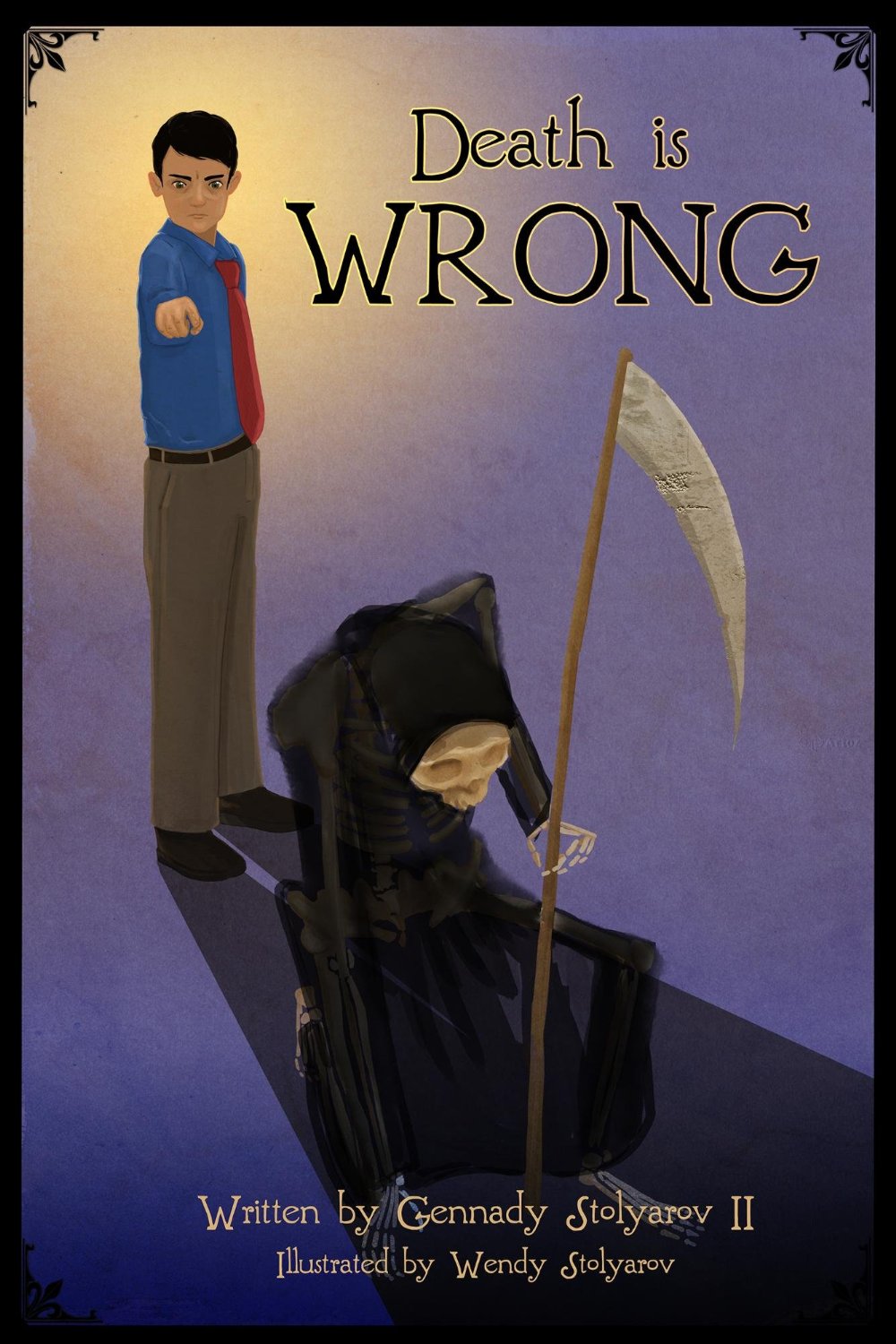Author’s Note: The following is a transcript of a talk given at the recent Radical Life Extension Conference held in the U.S. Capitol on September 22,2013. Talks were also given by Antonei B. Csoka, Gabriel Rothblatt, Tom Mooney, Mark Waser, Gray Scott, Josh Mitteldorf, Maitreya One, Jennifer ‘Dotora’ Huse and Apneet Jolly. A special thanks to David Pizer for making this article available for distribution at the upcoming Society for Venturism 2013 Cryonics Conference in Laughlin, Nevada, on October 25-27th.
Introduction
I would like to address what I consider to be three common criticisms against the desirability and ethicality of life-extension I come across all too often – three specters of immortality, if you will. These will be (1) overpopulation (the criticism that widely available life-extension therapies will cause unmanageable overpopulation), (2) naturality (the criticism that life extension is wrong because it is unnatural), and (3) selfishness (the criticism that life-extension researchers, activists, and supporters are motivated by a desire to increase their own, personal lifespans rather than by a desire to decrease involuntary suffering in the world at large).
But first I would like to comment on why this would be important. I would consider two of the three critiques – namely the naturality critique and the selfishness critique – to be largely unfounded and vacuous; I don’t think they will be real worries when comprehensive life-extension therapies arrive. I think that the overpopulation critique does have some weight to it; we do in fact need to plan for and manage the effects of a growing population. However, the overpopulation critique is wrong in assuming that such affects will be unmanageable.
So if at least 2 of these 3 critiques are largely unfounded, then what’s the worry? Won’t they simply disappear when life extension is achieved, if they are really so baseless? Well, yes, but the possibility of their turning out to be right at the end of the day is not what makes them worrying.
What makes them worrying is the fact that they deter widespread support of life extension from the general public, because they stop many people from seeing the advantage and desirability of life extension today. A somewhat common, though thankfully not predominant, attitude I find from some longevity supporters is that work is being done, progress is being made, and that the best course of action for those who want to be around to benefit from the advances in medicine already on the developmental horizon is simply to live as healthily as we can today while waiting for tomorrow’s promise. I don’t think this attitude necessarily deters progress in the life-extension field, but I certainly don’t think it helps it very much either. I think such people are under the pretense that it will take as long as it needs to, and that there is nothing the average person can really do to speed things up and hasten progress in the field. Quite to the contrary, I think every man and woman in this room can play as central a role in hastening progress in the field of life extension as researchers and scientists can.
This is largely due to the fact that just what is considered worthy of scientific study is to a very large extent out of the hands of the average scientist. The large majority of working-day scientists don’t have as much creative license and choice over what they research as we would like to think they do. Scientists have to make their studies conform to the kinds of research that are getting funded. In order to get funding, more often than not they have to do research on what the scientific community considers important or interesting, rather than on what they personally might find the most important or interesting. And what the scientific community considers important and worthy of research is, by and large, determined by what the wider public considers important.
Thus if we want to increase the funding available to academic projects pertaining to life extension, we should be increasing public support for it first and foremost. We should be catalyzing popular interest in and knowledge of life extension. Strangely enough, the objective of increased funding can be more successfully and efficiently achieved, per unit of time or effort, by increasing public support and demand via activism, advocacy, and lobbying, rather than by, say, direct funding, period.
Thus, even if most of these three criticisms, these specters of immortality, are to some extent baseless, refuting them is still important insofar as it increases public support for life extension, thereby hastening progress in the field. We need massive amounts of people to wake up and very explicitly communicate their desire for increased funding in biomedical gerontology, a.k.a. life extension. I think that this is what will catalyze progress in the field – very clear widespread demand for increased funding and attention for life extension.
This is something I think each and every man and woman here today can do – that is, become a life-extension activist and advocate. It is not only one of the easiest ways in which you can contribute to the movement – it may very well be the most important and effective ways that you can contribute to the movement as well. Send an email to the International Longevity Alliance (info@longevityalliance.org), an organization dedicated to social advocacy of life extension, which is compiling a list of life-extension advocates and networking them together. Arrange and organize your own local life-extension rally or demonstration, like the one held last year in Brussels. This could be as easy as holding up signs supporting scientific research into aging in the most traffic-dense location in your local area, recording it, and posting it on YouTube.
And so, without further ado, I’d like to move on to the three specters of immortality.
1. The Unmanageable-Overpopulation Critique
Firstly, I’d like to turn a critique of the possible undesirable societal and demographic repercussions of life extension. The most prominent among these kinds of critiques is that of overpopulation – namely that the widespread availability of life-extension therapies will cause unmanageable overpopulation and a rapid depletion of our scarce resources.
I think this critique, out of those three critiques addressed here, is really the only one that is a real worry. That is because potential negative societal repercussions of life extension are a real possibility, and must be appropriately addressed if they are to be avoided or mitigated. And don’t get me wrong – they are manageable problems that can be handled if we make sure to plan for them sufficiently, and allocate enough attention to them before their effects are upon us.
According to some studies, such as one performed by S. Jay Olshanksy, a member of the board of directors for the American Federation of Aging Research (and the foremost advocate and promulgator of the Longevity Dividend), if the mortality rate dropped to zero tomorrow – that is, if everyone in the world received life-extension therapies comprehensive enough to extend their lives indefinitely – we would experience a rise in population less than the growth in population we experienced following the Post-World-War-II baby-boom. Global society has experienced dramatic increases in population growth before – and when that happened we extended and added to our infrastructure accordingly in order to accommodate them. When significant increases in life extension begin to happen, I expect that we will do the same. But we must make sure to plan ahead. Overpopulation will be an insoluble problem only if we ignore it until its perceptible effects are upon us.
Luckily, there are a number of existing solution-paradigms to other, somewhat related problems and concerns that can be leveraged to help mitigate the scarcitizing effects of overpopulation on resources and living-space.
Contemporary concerns over the depletion of non-renewable resources, such as but not limited to climate change, can be leveraged to help lessen the detrimental effect overpopulation might have on non-renewable resources.
Another contemporary solution paradigm we can leverage to help mitigate the detrimental effects of overpopulation on living space is seasteading. This is the notion of creating permanent dwellings and structures at sea, essentially floating cities, outside of the territory of governments – more often than not to get around legal complications relating to whatever the prospective seasteaders wish to do. This movement is already bringing about designs and feasibility studies relating to the safe construction of very large floating cities.
The most common solution-paradigms proposed to combat the problems of resources and living space are space colonization and regulating how many children people can have. I think that long before we turn to these options, we will begin to better maximize the existing living space we have. 75% of the earth’s surface area is water. I think that we will colonize the oceans long before space colonization becomes a more economically optimal option. Further, we currently don’t use the living space we have very well. We live on the surface of a sphere, after all. There is nothing in principle preventing us from building taller and building deeper. We can take from existing proposals and feasibility studies pertaining to megastructures – that is, very large man-made structures – to build much bigger than we currently do.
Another existing field that can help lessen the potential resource-depleting effects of a growing global population is agricultural labs, indoor farming systems, and vertical farms. Such systems are in use today for large-scale food production. This would allow us to take all the space we currently have devoted to agriculture (roughly 40% of earth’s total land-area according to some estimates – see here and here) and move it underground or indoors.
Thus overpopulation is a real worry, but we have the potential solutions to its problematic effects today. We can leverage several existing solution-paradigms proposed to combat several contemporary problems and concerns in order to manage the scarcitizing effects of overpopulation on resources and living space.
2. The Naturality Critique
I’d like to turn to the Naturality criticism now – the criticism that life-extension is unnatural, dehumanizing and an affront to our human dignity. – This could not be farther from the truth. The stanch revulsion we have of death is right; appropriate; a perfectly natural response.
Besides which, “naturality,” insofar as it pertains to humans, is an illegitimate notion to begin with. For us human beings, naturality is unnatural. It is we who have cast off animality in the name of mind, we who have ripped dead matter asunder to infuse it with the works of our mind – we who have crafted clothes, codes, cities, symbols, and culture. Since the very inception of human civilization, we have very thoroughly ceased to be natural, and to such an extent that unnaturality has become our first nature.
Firstly, one thing that I think undercuts the critique of naturality rather well is the known existence of biologically immortal organisms. There are in fact known organisms where the statistical probability of mortality does not increase with age. Meaning that if one kept these organisms healthily fed and in a good environment for them, then they simply shouldn’t die. Not only are there proofs of concept for biological immortality – but it can be found in nature unmodified by man.
Hydras, small freshwater organisms, do not undergo cellular senescence and are able to maintain their telomere lengths throughout continued cell division. The jellyfish Turritopsis Nutricula can, through a process called cellular transdifferentiation, revert back to the polyp stage (an earlier stage in its developmental cycle) a potentially indefinite number of times. Planarian Flatworms also appear to be biologically immortal, and can maintain their telomere lengths through a large population of highly proliferative adult stem cells. And if you can believe it, an organism as commonplace as the lobster also appears to be biologically immortal. Older lobsters are more fertile than young lobsters, and they don’t appear to weaken or slow down with age.
There is then such a thing as biological immortality. In biology it’s defined as a stable or decreasing rate or mortality from cellular senescence as a function of chronological age. Meaning that barring such accidents as being eaten by prey, such organisms should continue to live indefinitely.
I also think that this is great proof of concept for people who automatically associate the magnitude of the endeavor with its complexity or difficulty, and assume that achieving biological immortality is technically infeasible simply due to the sheer profundity of the objective. But in regards to naturality, I think the existence of such biologically immortal organisms goes to show that there is nothing necessarily unnatural about biological immortality – because it has already been achieved by blind evolution in various naturally-occurring biological organisms.
Secondly, I think that the long history of seminal thinkers who have contemplated the notion of human biological immortality, the historical antecedents of the contemporary life-extension movement, help to combat the naturality criticism as well. Believe it or not, people have been speculating about the scientific abolition of involuntary death for hundreds of years at least.
As early as 1795, nearly 220 years ago, Marquis de Condorcet wrote
“Would it be absurd now to suppose that the improvement of the human race should be regarded as capable of unlimited progress? That a time will come when death would result only from extraordinary accidents or the more and more gradual wearing out of vitality, and that, finally, the duration of the average interval between birth and wearing out has itself no specific limit whatsoever? No doubt man will not become immortal, but cannot the span constantly increase between the moment he begins to live and the time when naturally, without illness or accident, he finds life a burden?”
Here we see one of the fathers of the enlightenment tradition speculating on whether it is really that absurd to contemplate the notion of a continually-increasing human lifespan.
In 1773, 240 years ago, Benjamin Franklin wrote in a letter to Jacques Duborg, first praising the sagacity and humanity demonstrated by his attempt to bring animals back from the dead, and then describing what can only be a harkening of cryonics and suspended animation, where he wishes that there were a way for him to be revived a century hence, and witness the progress in science that had been made since the time of his death.
“Your observations on the causes of death, and the experiments which you propose for recalling to life those who appear to be killed by lightning, demonstrate equally your sagacity and your humanity. It appears that the doctrine of life and death in general is yet but little understood…
I wish it were possible… to invent a method of embalming drowned persons, in such a manner that they might be recalled to life at any period, however distant; for having a very ardent desire to see and observe the state of America a hundred years hence, I should prefer to an ordinary death, being immersed with a few friends in a cask of Madeira, until that time, then to be recalled to life by the solar warmth of my dear country! But… in all probability, we live in a century too little advanced, and too near the infancy of science, to see such an art brought in our time to its perfection…”
Thus the notion of human biological immortality through science and medicine is not as new as most of us are probably quick to presume. Men of stature and intellect, respected and admired historical figures, have been contemplating the prospect for hundreds of years at least.
Thirdly, I think that religion itself exemplifies our desire for indefinite lifespans. This may seem counter-intuitive considering that many criticisms of life extension come from underlying religious arguments and worldviews – for instance that we shouldn’t be playing god, or messing with the way god created us. But the fact is that most religions have a conception of the afterlife – i.e., of eternal life following the physical death of the body. The fact that belief in an afterlife is a feature shared by almost all historical religions, that belief in an afterlife was conceived in a whole host of cultures independent of one another, shows that indefinite lifespans is one of humanity’s most deep-rooted and common longings and desires – indeed, one so deep-rooted that it transcends cultural distance and deep historical time.
3. The Selfishness Critique
Now I’d like to turn to the third specter of immortality – the criticism of selfishness. Whereas the first specter of immortality was a critique of the ethicality of life extension, this second specter is more a moralistic critique of the worthiness of actually spending one’s time trying to further progress in the field today.
The view that life-extension researchers, activists and supporters are arrogant for thinking that we somehow deserve to live longer than those that came before us – as though we were trying to increase public support for and interest in life extension merely for the sake of continuing our own lives. This, too, is, I think, a rather baseless criticism. Every life-extension researcher, activist, scholar and supporter I know does it not solely for the sake of their own lives but for the sake of the 100,000 people that die every day due to age-correlated causes. That’s right, ladies and gentlemen, 100,000 people will die from aging today, lost forever to causes that are in principle preventable and ultimately unnecessary. There are roughly 86,000 seconds in a day. That works out to a little more than one death per second. That’s about equal to the entire population of Washington, DC, dying every week, 3 million preventable deaths per month, and 36.5 million deaths per year. A group larger than the entire population of Canada will die from aging this year – and the fact that it sickens so few of us is incredibly sickening to me. This is an untenable situation for a civilization as capable as ours – we who have reshaped the world over, we who have gone to the moon, we who have manipulated atoms despite out fat monkey fingers. Humanity is an incredibly powerful and unprecedented phenomenon, and to say that we simply cannot do anything about death is to laugh in the face of history to some extent. Recall that very learned and esteemed men once said that heavier-than-air flying machines – and a great many other things we take for granted today – are impossible.
We cringe and cry when we hear of acts of genocide or horrible accidents killing thousands. But this occurs every day, on the toll of 100,000 deaths per day, right under our noses.
Doing something about this daily cataclysm is what drives my own work, and the work of most every life-extension supporter I know. The life-extension movement is about decreasing the amount of involuntary suffering in the world, and only lastly about our own, personal longevity, if at all. The eradication of involuntary death via science and medicine is nothing less than the humanitarian imperative of our times!
And again, this is something that I think each and every one of you can take part in. Become a life-extension supporter, advocate and activist. It may be not only the easiest way that you can contribute to hastening progress in the field of life extension, but the most effective way as well. Thank you.
###
Franco Cortese is a futurist, author, editor, Affiliate Scholar at the Institute for Ethics & Emerging Technologies, Ambassador at The Seasteading Institute, Affiliate Researcher at ELPIs Foundation for Indefinite Lifespans, Fellow at Brighter Brains Institute, Advisor at the Lifeboat Foundation (Futurists Board Member and Life Extension Scientific Advisory Board Member), Director of the Canadian Longevity Alliance, Activist at the International Longevity Alliance, Canadian Ambassador at Longevity Intelligence Communications, an Administrator at MILE (Movement for Indefinite Life Extension), Columnist at LongeCity, Columnist at H+ Magazine, Executive Director of the Center for Transhumanity, Contributor to the Journal of Geoethical Nanotechnology, India Future Society, Serious Wonder, Immortal Life and The Rational Argumentator. Franco edited Longevitize!: Essays on the Science, Philosophy & Politics of Longevity, a compendium of 150+ essays from over 40 contributing authors.





